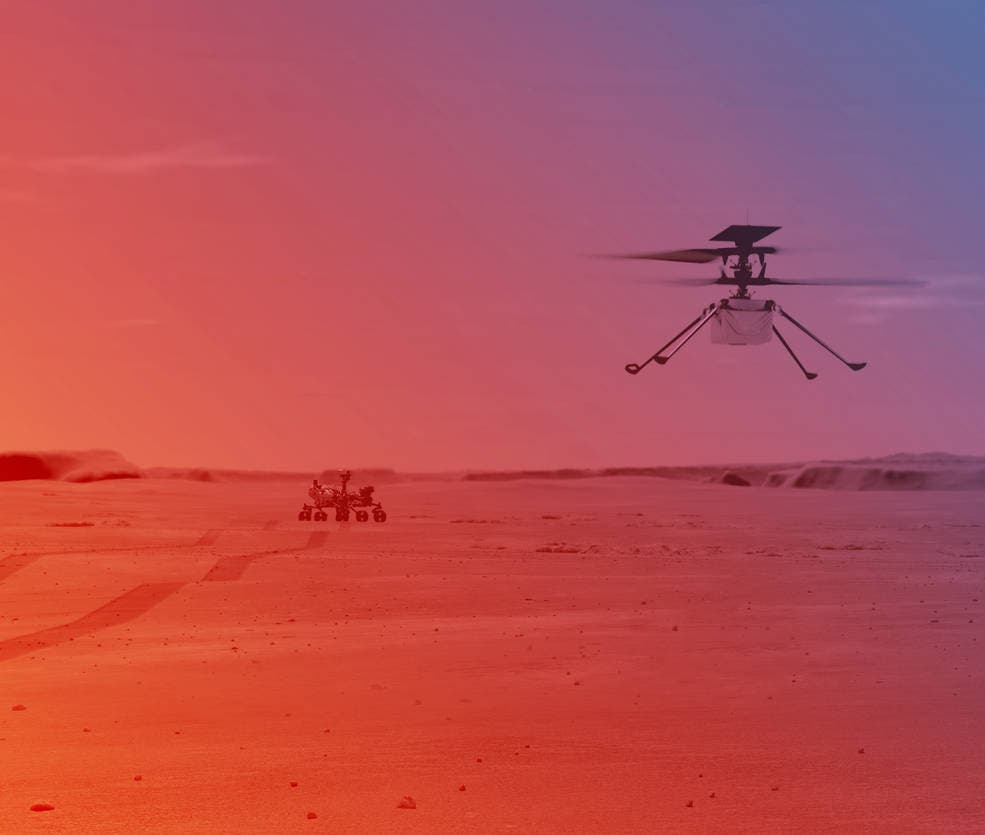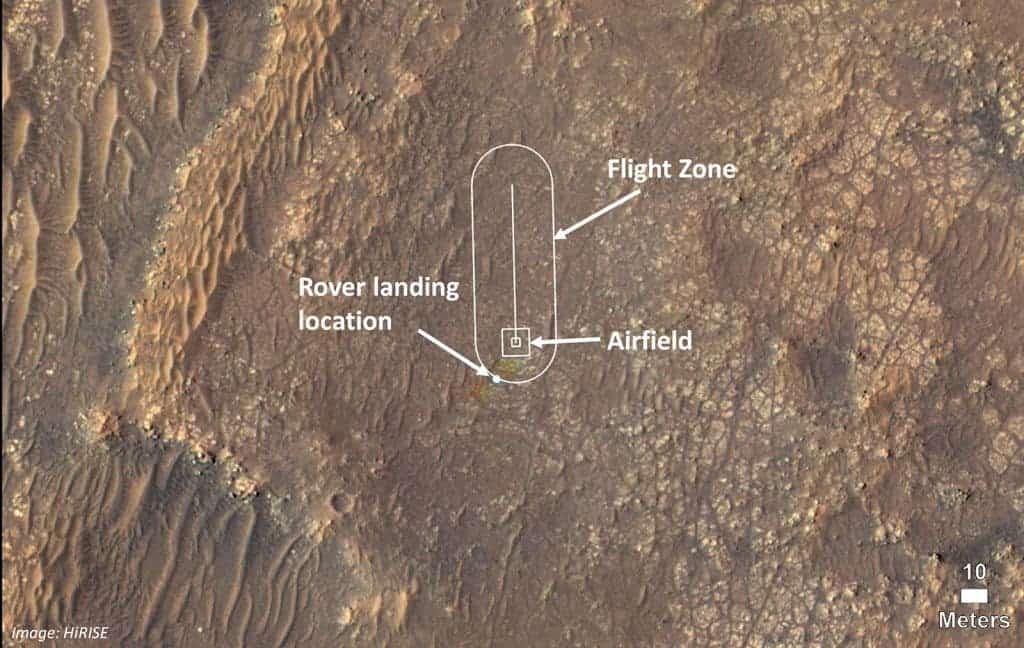We are just weeks away from what could be a major accomplishment in space exploration: NASA is getting ready to fly the first helicopter outside of Earth. It’s set to happen on Mars as early as April 8. Still, there are several boxes to tick before the helicopter is ready to take off from the ground of the Red Planet.

The helicopter landed on Mars on February 18 in the belly of the Perseverance rover, which made its landing in Jezero Crater just over a month ago. Called Ingenuity, the 1.8kg aircraft will attempt a series of short hops in Mars’ rarefied air. If successful, it would represent something of a “Wright Brothers moment”, said NASA, referring to the first powered aircraft flight on Earth.
“When NASA’s Sojourner rover landed on Mars in 1997, it proved that roving the Red Planet was possible and completely redefined our approach to how we explore Mars. Similarly, we want to learn about the potential Ingenuity has for the future of scientific research,” Lori Glaze, director of the Planetary Science Division at NASA, said in a statement.
At the moment, the chopper is still attached to Perseverance’s belly. The rover is driving to the center of the airfield – a 10 meters by 10 meters area – and should arrive in a few days. After that, six more days will be needed to deploy the helicopter. Finally, with the helicopter hovering about 13 centimeters about the surface, Perseverance will roll away.
The rover will try to reach a safe distance of 60 meters from the airfield, from where it can capture the flight with its cameras. Ingenuity is also equipped with cameras and will photograph Perseverance as it goes. The helicopter will have 30 days to operate before the rover has to resume its science mission. The first week will be just to test the motor and the blades.

Ingenuity was built to be extremely light so as to be able to lift off in the thin atmosphere of Mars. It has four carbon-fiber blades arranged into two rotors that spin in opposite directors at 2,400 revolutions per minute – much faster than the blades of a helicopter on Earth. It cost $85 million and if it succeeds it could open space exploration in a big way.
“I can only imagine where we may be a decade or so from now,” Bobby Braun, director for planetary science at NASA’s Jet Propulsion Laboratory, said during a news conference. “If we can scout and scientifically survey Mars from the air, with its thin atmosphere, we can certainly do the same at a number of other destinations across the solar system.”
NASA is already planning to send a rotorcraft to explore Titan, the largest moon of Saturn, as part of its Dragonfly mission scheduled to launch in 2026. The rotorcraft will fly to dozens of promising locations on Titan looking for prebiotic chemical processes common on both Titan and Earth. It has eight rotors and flies like a large drone
But, at least for now, let’s focus on Mars and what could be a big accomplishment from Ingenuity. After the flight period, Perseverance will have to go back to its own mission – looking for signs of ancient Mars life and collecting dozens of samples for future return to Earth. That material will be taken back to Earth by a campaign as early as 2031.









